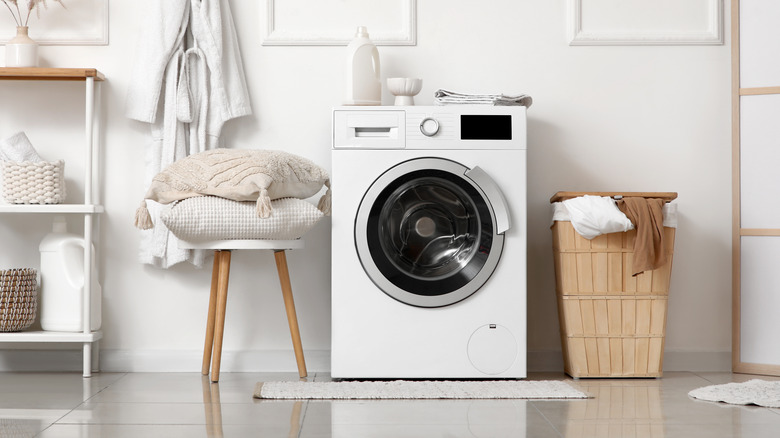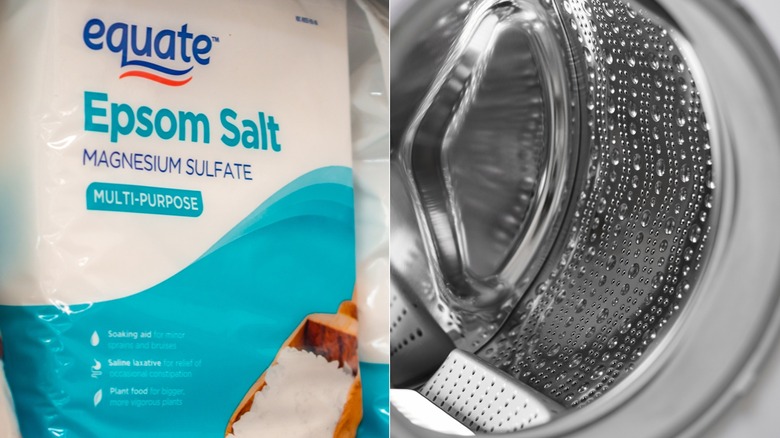Clean The Grime Out Of Your Washing Machine With A Simple Epsom Salt Hack
You clean your floors, your counters, even your baseboards — but when was the last time you cleaned your washing machine? If your answer is "never" or "I didn't know I had to," you're not alone. One of the most common misconceptions people have about washing machines is that because they clean our clothes, they shouldn't need cleaning. But that is far from the truth. Washing machines can build up grime, mildew, and bacteria if not cleaned properly. So, what is the best way to clean your washing machine? With vinegar and Epsom salt.
Over time, soap residue, hard water minerals, and even mold can accumulate in hidden areas like the drum, hoses, and rubber seals of your washer. This buildup doesn't just affect how your machine smells — it can also wear down your appliance and leave clothes feeling less than fresh. That's why this Epsom salt hack isn't just a trend. It's a practical, affordable solution to a dirty machine — and one of the smartest cleaning hacks to help keep your washing machine sparkling clean.
How to use Epsom salt to clean your washing machine
To use this hack, start with an empty washer. Add 1 cup of Epsom salt to the drum, pour ½ cup of white vinegar into the drum as well (not the detergent tray), and then set your machine to run on the hottest and longest cycle available. If your washer allows it, pause the cycle mid-way and let the mixture sit for about an hour before completing the cycle. This soaking time allows the Epsom salt and vinegar to dissolve mineral buildup, remove grime, and neutralize any nasty odors. This method works well for both front-load and top-load washers. It's non-toxic, safe when used correctly, and incredibly effective.
As for how often you should really be cleaning your washing machine, once a month is ideal. If you use your washer heavily, live in an area with hard water, or notice musty smells, clean it every two to three weeks instead. Don't forget the trouble spots: Wipe the door gasket and glass with a damp cloth to remove trapped moisture and lint, remove and scrub the detergent drawer in warm, soapy water, and always leave the washer door open after a cycle to let it air dry and prevent mold growth. With this routine, you're not just cleaning for appearance — you're preserving your appliance and making sure your laundry actually gets clean.

